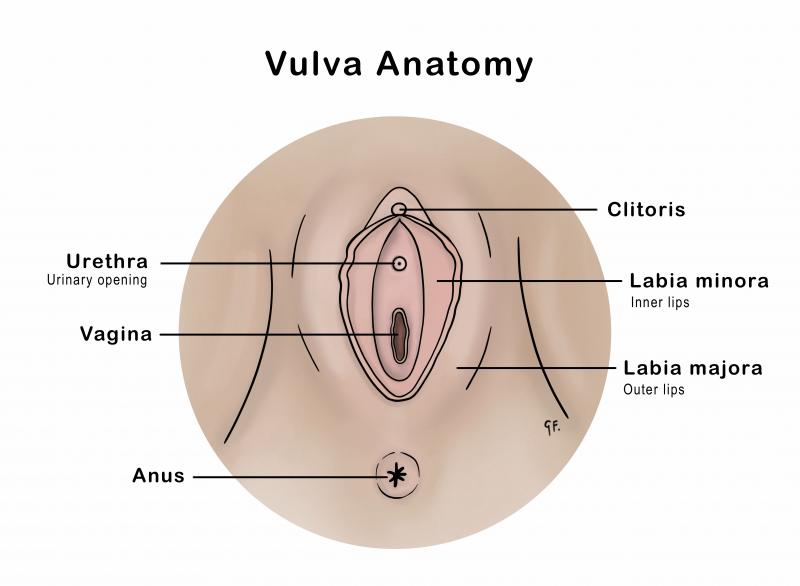Labial Fusion In Children
Labial Fusion In Children
Labial fusion is common in children. In most cases, it resolves as your child gets older and requires no treatment.
Key points about labial fusion in children
- labia are part of the outer female genitals
- labial fusion is common in tamariki
- labial fusion resolves as your child grows
- in most cases, labial fusion needs no treatment
Where are the labia?
The labia are part of the vulva. The vulva includes all the outer genitals in females including the vagina and urethra (where wee drains from). The labia minora sit on each side of the vaginal opening.

What is labial fusion?
Labial fusion is when the two flaps (the labia minora) on either side of the vaginal opening are joined together. Labial fusion is common. In most cases, it resolves as your child grows, and no treatment is needed.
The illustrations below show partial labial fusion and full labial fusion compared with a normal vulva and labia.

What causes labial fusion in children?
Sometimes, labial fusion can happen after inflammation of the labial area, such as after vulvovaginitis. It may also be related to the low levels of the hormone estrogen in tamariki before puberty. However, the exact cause of labial fusion is not known.
See the KidsHealth page on vulvovaginitis to learn more
What are the signs of labial fusion in children?
Labial fusion usually develops when a child is around 1 to 2 years of age. It is not usually present from birth. If your child has labial fusion, you will see the labia joined together instead of two separate labia. Most tamariki with labial fusion will have no other symptoms.
There will usually be a small opening along the join that will allow wee through. Sometimes, this can be very small and difficult to see.
What should I do if I think my child has labial fusion?
If you suspect your child has labial fusion, take them to the doctor. The doctor will examine your child and can confirm if they have labial fusion.
How is labial fusion treated in children?
Treatment is not needed for most cases of labial fusion in children. By the time your child reaches puberty, the join has usually separated naturally. This happens slowly and is not painful. Leaving labial fusion alone is the safest way to manage it.
Treatment may be required if the labial fusion is causing problems. Sometimes it may be difficult for wee to drain fully, which may lead to urine infections. In this case, your child’s doctor may consider some oestrogen cream. Surgery to separate the labia is not normally recommended as often the labia will fuse together again.
Are there any complications of labial fusion?
Some tamariki may get urine infections if wee is not draining properly. In those cases, a doctor may consider treatment for the fusion. Labial fusion is not linked to any other medical conditions. It will not impact on your child’s ability to have children in the future.
See the KidsHealth page on vulval skin care for more information
This page last reviewed 30 August 2023.
Do you have any feedback for KidsHealth?
If you have any feedback about the KidsHealth website, or have a suggestion for new content, please get in touch with us.
Email us now